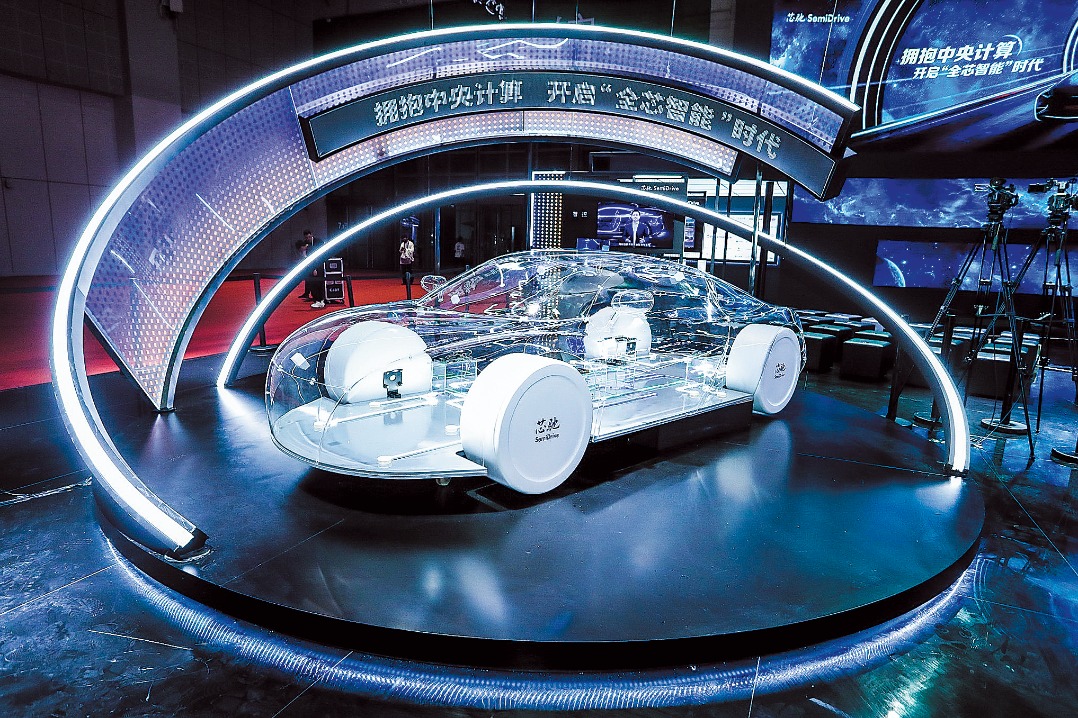Foreign companies see great opportunities in China as RCEP takes full effect


TIANJIN - At a hotel restaurant in north China's Tianjin municipality, the buffet tables have been turned into a feast for the eyes, covered with beef from Australia, lobsters from Vietnam, mussels from New Zealand, soft-shell crabs from Myanmar and rice from Thailand.
Guests from around the world can enjoy cuisines with ingredients imported from the Regional Comprehensive Economic Partnership (RCEP) members.
The RCEP is comprised of 15 members - the 10 Association of Southeast Asian Nations (ASEAN) member states, China, Japan, the Republic of Korea (ROK), Australia, and New Zealand. The RCEP was signed in November 2020 and went into effect on Jan. 1, 2022, with the aim of gradually eliminating tariffs on over 90 percent of goods traded among its members.
The RCEP came into effect in the Philippines on June 2, marking a milestone with the world's largest free trade pact being fully active for all 15 member countries.
"Our hotel's restaurants benefit a lot from the RCEP agreement in force," said Anthony Gill, general manager of the Four Seasons Hotel Tianjin, adding that it is more convenient for them to purchase ingredients from RCEP members due to a record high number of supplier options.
With the easing of the traveling policy and the recovery of the tourism industry, the hotel's accommodation business has shown impressive growth recently. Hotel room bookings in June surged more than 150 percent year-on-year.
Business travelers from RCEP member countries like Japan, the ROK and Singapore have become frequent guests.
"Many businessmen from those countries come to Tianjin for business opportunities, which in turn, directly supports our hotel's business," Gill said.
Executives of foreign companies in China have also seen great opportunities as RCEP took full effect.
Shin Eun Shik, from the ROK, has been engaged in the business of production and sales of water treatment equipment and related accessories in Tianjin since 2002.
"Due to the RCEP agreement in effect for all the members and other factors, our sales revenue is expected to exceed 50 million yuan ($7 million) this year, more than doubling that of last year," said Shin, president of ITM (Tianjin) Mechanic Equipment Co Ltd.
In addition to serving local Chinese companies, Shin's company exports its products to the ROK, Australia, Indonesia and other places.
"It's more convenient to export goods to Australia. Meanwhile, our Australian customers can reduce costs with the tariffs cut or eliminated. It's a mutual benefit," Shin said.
Shin said it will also help the company as it looks to further enhance the competitiveness of its products and develop new markets in RCEP countries.
SMC (China) Co Ltd, a wholly-owned subsidiary of Japan's pneumatic component manufacturer SMC Corporation, has also witnessed new opportunities. Since taking root in China in 1994, SMC has established factories in Beijing, Guangzhou and Tianjin.
Ma Qinghai, an executive of the company, said after the RCEP agreement took full effect, the pneumatic components produced in China became more competitive.
"We can not only provide more services for the industrial automation industry in RCEP member countries, but also help the supporting suppliers in China enjoy the preferential benefits of the agreement," Ma said.
In the first half of this year, China's imports and exports with the other 14 RCEP members totaled 6.1 trillion yuan, up 1.5 percent year-on-year, contributing more than 20 percent to China's foreign trade growth, according to the General Administration of Customs.
Zhang Yansheng, chief researcher at the China Center for International Economic Exchanges, said more foreign companies will continue to take root in China due to the comprehensive implementation of the RCEP.
"Foreign companies can expand their future industrial and supply chains to the three major regional economic cooperation circles, China-ASEAN, China-Japan-ROK, and China-Australia-New Zealand. They will share more important trade and investment opportunities created by regional development," Zhang said.




































